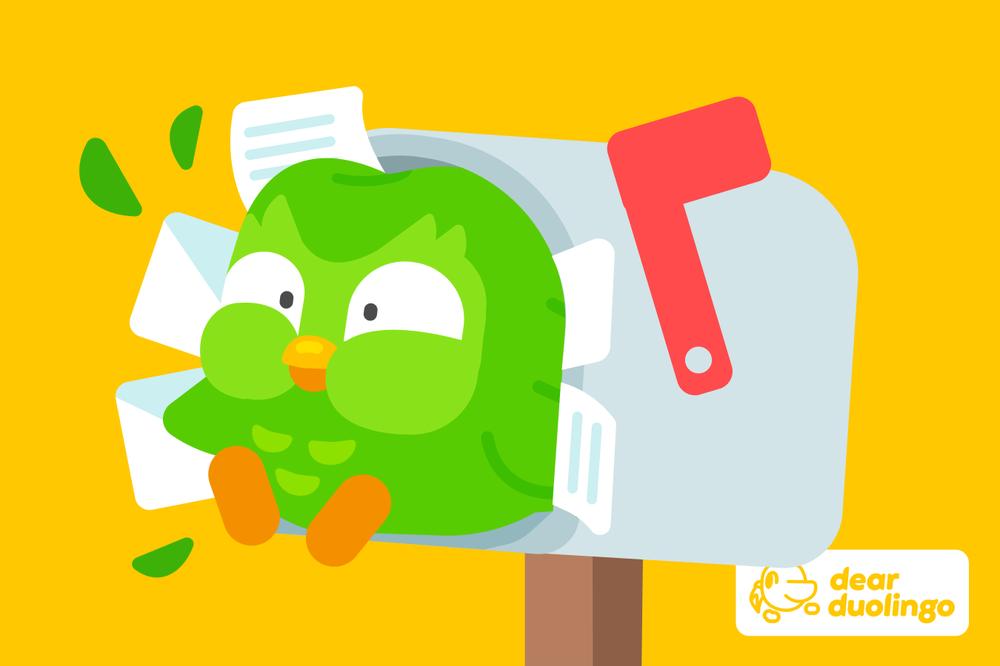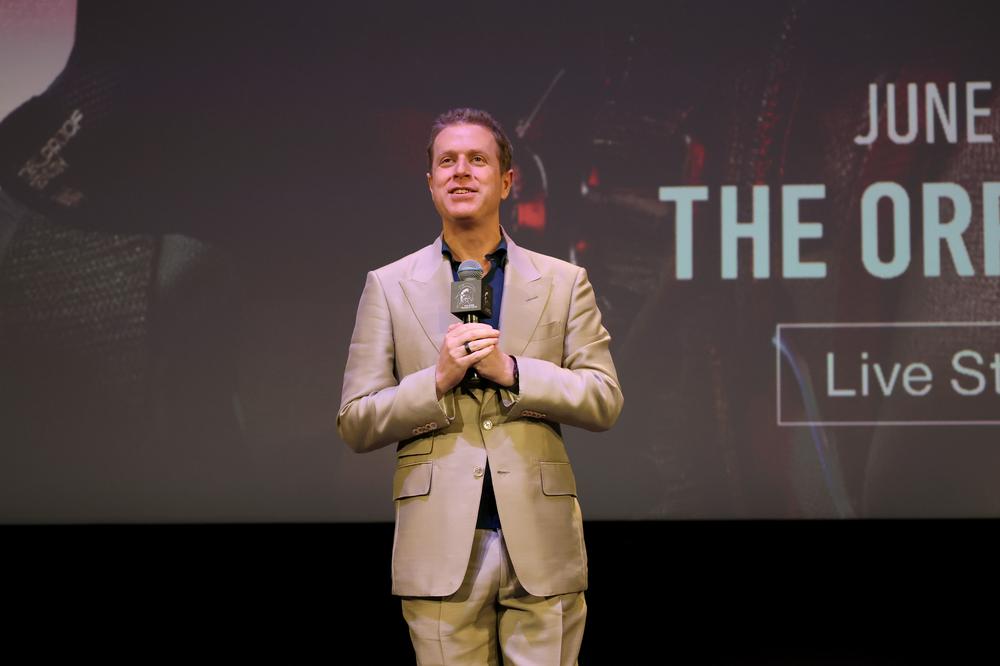Welcome to another week of Dear Duolingo, an advice column just for learners. Catch up on past installments here.
Hey there, learners! This week’s question is one we’ve received many versions of. Many of you like to use Google Translate to help complete your lessons, but it doesn’t always work like you’d expect. Why is that? Let’s take a look.
Our question this week:
Translation really is an art—there’s a lot more nuance than meets the eye, whether it’s your career or you’re a learner using it for support.
But translating a language is different than learning a language. Translation software—like Google Translate—is designed to give a quick, basic equivalent in multiple languages. It can be a useful way to test yourself, double-check your hunches, or instantly translate a menu, but it won't get you having conversations, understanding your favorite music, or engaging with the culture.
As a result, using translation software might not always get you the “correct” answer in your Duolingo lesson, and not because one is right and the other is wrong. Rather, they are taking different factors into account when they give you a translation. And if your goal is to *learn* a language, you’ll get more out of software that’s designed to *teach* you!
From the perspective of a teacher, we would encourage you not to use translation software to complete your lessons, for the good of your learning… but also from the perspective of teachers, we suspect you might do it anyway 😉 So here are 8 reasons you might be led astray by translation software when doing your Duolingo lessons.
Possibility 1: differences in goals
Any time you need to translate something in Duolingo, we match your submission against a long list of acceptable answers (sometimes numbering into the thousands!). But for some exercises—like those with word tiles—we only have enough space to include tiles for one possible translation. That one translation is often one of many, but it’s chosen because it includes the specific word(s) and grammar that lesson is teaching, it uses only other words and grammar that you’ve seen at that point in the course, and it has the most common or natural word order (even if others are possible).
Translation software like Google Translate doesn’t know about those Duolingo-specific teaching constraints. So the answer you get from software might be quite different from what we’re expecting you to respond with in your lesson—because we’re thinking about your whole experience as a learner in our course!
(And actually, this issue is not so different from using translators or AI on your homework for in-person language classes—your teacher knows when you’re using vocabulary and grammar that you haven’t been taught yet! 🫣)
Possibility 2: differences in gender
If one of the languages has grammatical gender—for example, that even objects have a gender, like masculine or feminine—but the other doesn’t, the translation software might make some assumptions in the translation and lead you astray.
For example, the English sentence You are tall doesn’t include information about the gender of you, since English doesn’t have grammatical gender. (But it used to!) So the English sentence could refer to a tall person of any gender, but translation software often has built-in defaults or preferences.
Even though Google Translate gives two options for You are a nurse—one for a man and one for a woman—it only gives one possibility for You are tall. If you’re a new learner still figuring out the complexities of grammatical gender, you could easily think this is the only acceptable option!
(And you might be especially confused if the word tiles in your lesson include only alta for a feminine you and not alto for a masculine you.)
Possibility 3: differences in number
There are also differences in how languages represent singular and plural—and English is a good example of a language that makes this complex!
For example, the English pronoun you can mean one single person or a group of people (like y’all or you guys). Some languages don’t have this ambiguity because they use one word for you=1 and another for you=many.
As in the You are tall example above, the translation software might just give you one option, choosing either the singular or the plural interpretation. That’s why you might not see the matching word tiles in the Duolingo exercise, if your lesson was teaching you the other interpretation!
Possibility 4: differences in formality
There aren’t always direct translations in terms of formality, so if your translation software is providing just one “answer,” you might not be seeing the full range of possibilities!
This is especially true in languages like Japanese that have many more formality levels than languages like English—but even Romance languages like Spanish and French have formal and informal forms of pronouns and different verb conjugations, and formality can affect other words and grammar, too.
So, when you take into account gender *and* number *and* formality, you can see just how many ways an automated translation could lead you astray! For that single, simple English sentence You are tall—for which Google Translate provided just one solution—there are actually many alternatives you might have needed for your Duolingo lesson:
Masculine Feminine Singular Plural Singular Plural Informal Tú eres alto.Eres alto. Ustedes son altos.
Son altos. Tú eres alta.
Eres alta. Ustedes son altas.
Son altas. Formal Usted es alto.
Es alto. Usted es alta.
Es alta.
(And that doesn’t include all the different possibilities across dialects for singular and plural you, and formal and informal versions… and their verb conjugations!)
Possibility 5: differences in meaning
Another challenge with translation software can be with the meanings of individual words. You might have a clear idea of the meaning you’re looking for, but that doesn’t always mean the software can guess what you mean 😅 This can be especially prone to mistakes if you translate just one word at a time.
For example, the English word can has many meanings (like a tin can or a trash can), and can even be different parts of speech (like those nouns versus as a verb in I can read)—but Google Translate defaults to the verb meaning when you translate it to Spanish. (And the translation is of the Spanish infinitive, but there are actually tons of conjugated forms of this verb in Spanish!)
If your Duolingo exercise intended one of the noun forms of can, as in I bought a can of beans, you’d be surprised not to see poder among the tile options. It would also be counted as incorrect, since typing in poder yourself would translate to something like I bought a to be able of beans 🥴
You’ll run into this issue even when translating sentences. That extra context can help, but any software will have its own defaults and most common strategies for translating. It might always prefer one synonym over another, and some can struggle with figurative meanings and idioms (like the English expression to be on a roll, “to continue doing something well”).
Possibility 6: differences in dialect
All languages are made up of multiple different dialects, so vocabulary, sentence structure, and grammar can vary a lot across speakers and places. Duolingo courses aim to teach what will be as widely-understood as possible, while translation software might default to particular dialects (or a dialect different from what's used in your Duolingo course).
For example, the Spanish word futbolista translates to soccer player in U.S. English—but you'll find something different in Google Translate 👀 In a Duolingo exercise with word tiles, you'd only see soccer player, even though footballer is the U.K. equivalent. For word tiles, we had to choose just one option, and Google Translate chose another.
Whether you’re learning Spanish, English, Arabic, or any other language with many different dialects spoken across the globe, there are bound to be multiple ways to express even some of the most common concepts, and most translation apps don't display them all.
Possibility 7: user error 🫣
If you type a Duolingo sentence into translation software, even a small typo can totally change the translation and its meaning!
You can see in just example above with English tall and Spanish alto/alta how just one letter can change who the Spanish sentence is referring to, and this can happen across languages, especially if the language has a lot of endings. You might be accidentally translating something quite different from the sentence in your Duolingo lesson!
Possibility 8: software overcorrection
Sometimes, Google Translate might try to give you a push in the right direction, thinking you’ve made a mistake, but will end up leaving you more confused than when you started! If you’re presented with the Spanish sentence El mono trepó el árbol (The monkey climbed the tree) but you can’t remember what mono means, Google Translate might not be helpful:
The same is true if you see the sentence Cenamos papas anoche (We had potatoes for dinner last night) and turn to Google Translate for help remembering the word papa:
In both cases, Google thinks you’ve left out an accent mark: With a tilde, moño means “bun” (like the hairstyle), while papá means “dad”!
A sentence can be worth a thousand words
Automatic translations can certainly help in a pinch, but for real language learning, trust the experts—and yourself! The best way to practice your new language is to use it, including in your Duolingo lessons. 😉

 How to watch Gamescom Opening Night Live 2025
How to watch Gamescom Opening Night Live 2025